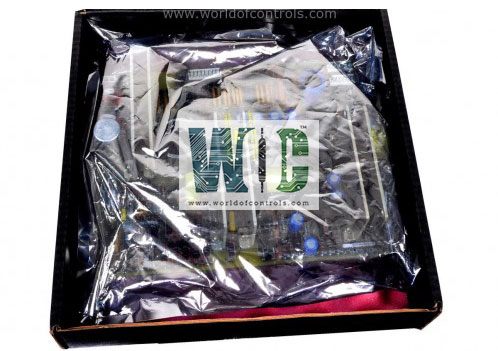SPECIFICATIONS
Part No.: IS230JPDGH2B
Manufacturer: General Electric
Product Type: Power Distribution Module
Temperature: -30 to 65oC
Size: 16.51 cm High x 17.8 cm Wide
Mounting: DIN-rail mounting
Technology: Surface-mount
Availability: In Stock
Country of Manufacture: United States (USA)
Series: Mark VIe
Functional Description
IS230JPDGH2B is a Power Distribution Module developed by GE. It is a part of the Mark VIe control system. The board is responsible for distributing three types of power within the control system. 28 V dc (Control Power) for powering control circuits and other low-voltage components. 48 V / 24 V dc (Wetting Power) for wetting circuits and other specific applications within the control system.
Features
- AC Distribution Sensing: The board includes a sensing circuitry to monitor two channels of AC distribution, providing crucial feedback and diagnostic information.
Dual Power Supply Inputs: The 28 V dc distribution section of the board is designed to accommodate two separate power supply inputs, each connected through external diodes. This redundancy ensures system reliability by allowing for backup power sources in case of primary supply failures or faults.
- Integration with PPDA I/O Pack: When used in conjunction with the PPDA I/O pack, seamlessly integrates into the Power Distribution Module (PDM) system feedback loop. This integration enhances the overall functionality and monitoring capabilities of the control system, enabling efficient management of power distribution and diagnostic processes.
- AC Signal Sensing and Diagnostics: Additionally, the board is equipped to support the sensing and diagnostic functions for two AC signals. These signals, distributed externally from the board, are essential for monitoring critical aspects of the control system's operation and ensuring prompt identification and resolution of any issues or abnormalities.
Input power connections
- Control Power Input Connections: The board accommodates either one or two input connections for 28 V dc control power. These connections are established via connectors JR and JS, serving as entry points for external power sources. Integrates a common 28 V DC bus, facilitating streamlined distribution of control power to various components and subsystems within the control system.
- Wetting Power Input Connections: For wetting power, the board supports either one or two input connections, available at either 24 V dc or 48 V dc. These input connections are facilitated through connectors JPS1 and JPS2, offering flexibility in configuring power inputs based on system requirements. Similar to control power, the JPDG incorporates a common 24/48 V DC wetting voltage bus, ensuring efficient distribution of wetting power across designated components and circuits.
- By providing multiple input connections for both control and wetting power, the board ensures redundancy and reliability in power supply configurations. The integration of common bus designs for both control and wetting power simplifies power distribution processes and enhances system efficiency. These input power connections are fundamental in maintaining operational integrity, delivering stable and consistent power to support various functions and subsystems within the control system.
World of Controls has the most comprehensive collection of GE Mark VIe components. Please contact WOC as soon as possible if you require any extra information.
Frequently Asked Questions
What is IS230JPDGH2B?
It is a Power Distribution Module developed by GE
What is the purpose of jumper JP1 on the JPDG Power Distribution board?
Jumper JP1 serves the crucial function of providing or interrupting voltage-centering resistors from positive and negative DC to the local earth connection on the board.
When should jumper JP1 be in place?
Jumper JP1 should be inserted when there is a need to center a floating DC bus on earth. This configuration helps in achieving a stable and referenced ground connection for the DC bus.
What happens when jumper JP1 is removed?
When JP1 is removed, the connection to earth is opened. In this state, the voltage-centering resistors are not engaged, and the DC bus may not be centered on earth. This configuration might be suitable for scenarios where a floating DC bus is preferred without referencing it to earth.
